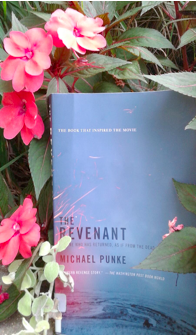Though I wrote in a blogpost back in January that I might take up streaming on a regular basis, it is a theory that worked better on paper than it did in real life. I work a full-time job and I am in the process of writing a story. I have other activities that take up a lot of my time. And I lack a good PC that will let me play the more graphics-laden immersive games I like, such as Mass Effect Andromeda, Fallout 4, Subnautica, and several upcoming titles.
During a vacation from work, I decided to broadcast a streaming session. I sent out a notification to several Discord channels I’ve been following and started an hour-long broadcast on August 15. The game I picked was a popular title I’d favored for a while – Don’t Starve. To make it easier on myself, I tweaked the game settings to lessen the amount of monsters encountered and increase my odds of survival.
The one thing that surprised me was that several of my viewers had never played this game and had no idea what it was about. Some of them did express interest in trying it themselves based on what they saw.
For those unfamiliar with this title, Don’t Starve is a game that focuses on base building, harvesting resources, crafting items needed to survive, and fending off monster attacks. I try my best at it, but I think the longest I’ve made it is 80 to 90 days. I haven’t really mastered making it through the winter or summer, but the game can be modified to remove those seasons entirely.
Don’t Starve is a very complex and layered game that can be difficult to master, but quite rewarding when you figure it out. For starters, you can pick from one of fifteen characters from the base game and DLC – each with their own strengths and weaknesses. Initially, you only start with one – all the others can be unlocked depending on time spent playing the game or if certain conditions are met. My personal favorites are Webber, a humanoid spider who can live amongst the normal spiders without fear of attack, and WX-78, a robot that can upgrade its stats by chowing down on gears.
Each playthrough of Don’t Starve generally starts you out near a forest grove unless you’re playing the Shipwrecked DLC – but more on that later. Constructing an axe to chop down trees and a pickaxe to mine stone is a must early on since one of the things you’ll want right away is a permanent campsite. But it’s generally good to wait until you find an ideal location for your base before you hunker down.
The thing about Don’t Starve is that the land you find yourself inhabiting has a number of different environments to explore, such as forests, deserts, swamps, and prairies. Each of these environments or biomes contains their own unique harvestables or food sources you’ll need for long-term survival. Finding a base location that’s close to many of them will really help out in the long run.
Some of the early structures you’ll want for your settlement are farm plots to plant seeds and an icebox to keep food from spoiling too quickly. It also helps to construct armor and a suitable weapon to lessen the damage you take from inevitable monster attacks. The rest, you’ll have to discover for yourself.
And for those who do master the base game and are looking for an additional challenge, the Shipwrecked DLC offers a radically different adventure. In this scenario, you must construct a sailing vessel to move from island to island in search of resources to survive. Shipwrecked offers a whole new set of obstacles and dangers to overcome and feels like a completely separate game from Don’t Starve.
There is also another DLC called Hamlet due out this December. I don’t know many details, but Hamlet will bring a village into the mix where goods can be traded. I don’t know if this add-on will make the game easier, but I look forward to finding out.
I hope you all enjoyed this article and that Don’t Starve sounds like a game you might be interested in. Whatever your feelings, be sure to share them in the comments below.
